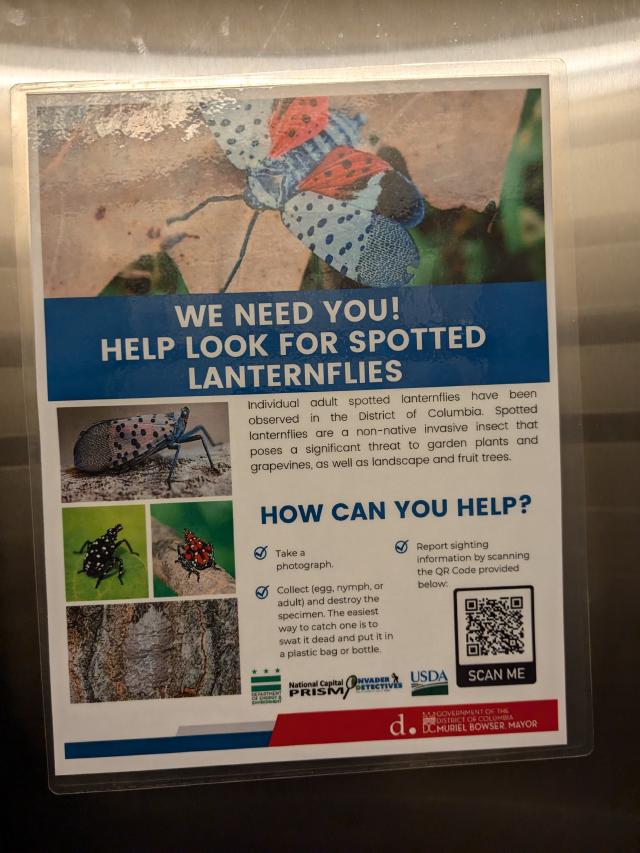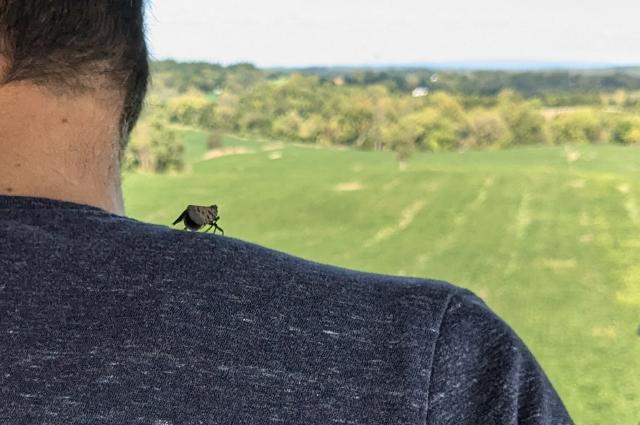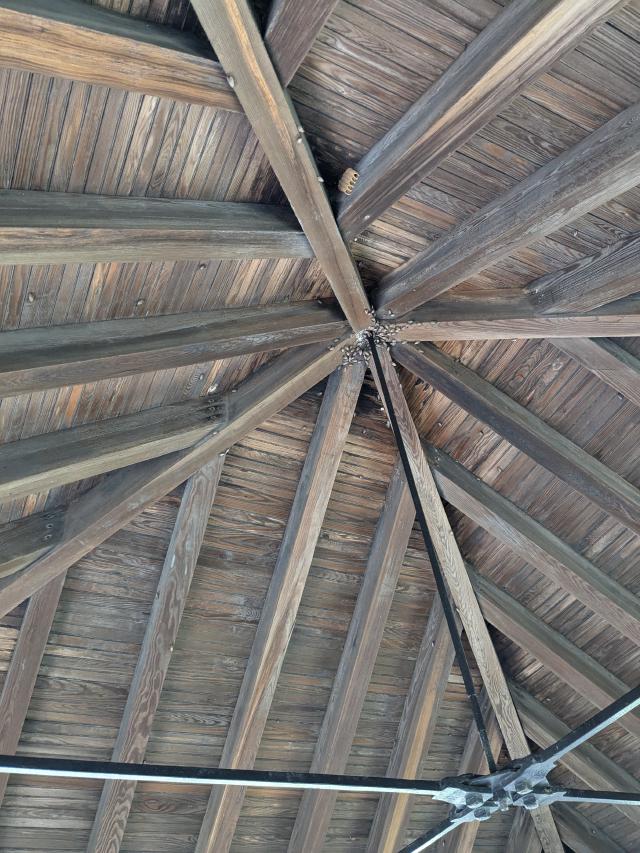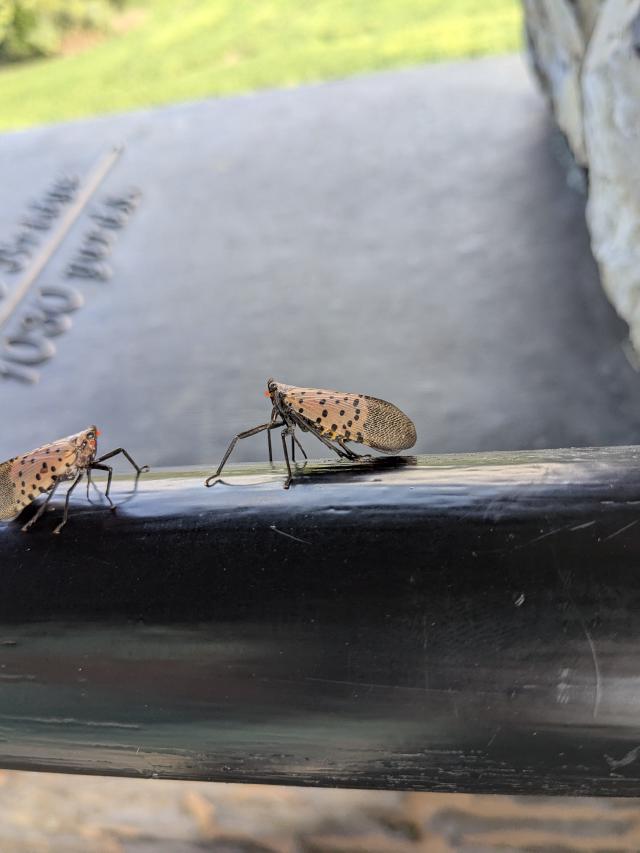Do we actually have a problem?
I have seen signs warning about the spotted lantern fly since 2019. This insect can be very damaging to agriculture.

While in Antietam National Battlefield, we went up into an observation tower. The ceiling was covered with lantern flies and they landed all over us. Unlike a housefly or a mosquito, they seemed to land without any attention to detail. Their flight patterns were frighteningly random and erratic. We couldn’t stand to be up there with them, and lasted only a few moments in the tower.


According to the Virginia Cooperative Extension
After several years of continuous spread in Pennsylvania, spotted lanternfly (SLF; Fig. 1) was first found in Winchester Virginia in January 2018. The initial infestation zone (Spring 2018) included about 1 square mile; by November 2018 SLF had expanded its range to about 18 square miles. It is highly invasive and spreads rapidly when introduced into new areas. This is attributed to its wide host range (more than 70 host plant species) and a lack of effective natural enemies. SLF is now established throughout the Shenandoah Valley are parts of the Piedmont. Natural spread is estimated to be about 10 miles per year; there is great risk of spread by hitchhiking on vehicles.
These helpful materials also describe the look-alike species
This experience reminded me to be vigilant about following recommendations, even if we don’t believe there’s a real threat.
